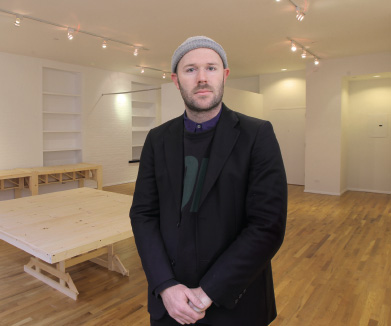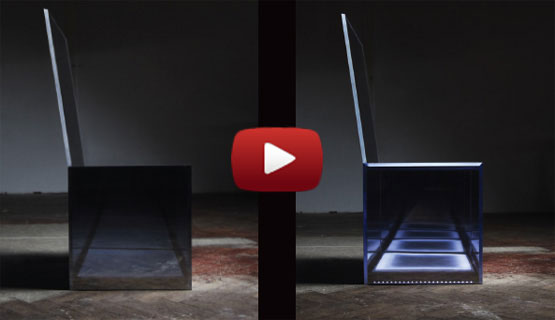Art with a Conscience
Steffen Ringelmann ’04 acquired a taste for “transgressive” art at Vassar. Now he’s made it his business.

It was a surprising sight to see on Vassar’s well-manicured campus. Homeless people dressed in tattered clothing, and surrounded by shopping carts and signs soliciting spare change. One slept on the steps of the library, another at the entrance of ACDC, and a third near the entry to the college bookstore. The somber figures set people on edge. Some called campus security to report concerns.
The figures—created by art and media studies double major Steffen Ringelmann ’04 as part of his senior project—brought the very real issue of homelessness front and center, fueling campus-wide discussion. The success of his thesis project only reinforced Ringelmann’s interest in pursuing the arts after graduation.
He launched the RAD Gallery (www.radgallery.com) with Vibeke Arnt-Jensen in 2011 while studying contemporary design at Sotheby’s Institute of Art, London. The aim was to showcase emerging art and design talent, including fine artists and designers of furniture, lighting, fashion, and other products—the kinds of artists he was seeing all around him.
RAD is a virtual gallery, in that it does not occupy one physical space. Instead Ringelmann and his partner use the “pop-up” model, presenting their artists’ work at design fairs, art galleries, lofts, and vacant storefronts in strategic locations around London and soon New York City. Ringelmann acknowledges that clients may one day want to visit a dedicated physical location, but for now, it’s a cost-saving model that works, in part, because of the element of surprise.
Like the work conceived as part of the curator’s senior project, RAD’s installations tend to make cultural, social, and political statements. Patrons may reexamine what Ringelmann calls “a throw-away culture, where objects are consumed and discarded too often and too easily” by viewing Dutch designer Pepe Heykoop’s furniture, made from abandoned chairs and tables covered with industrial leather scraps.

Or they may find themselves contemplating their relationship to the objects they use every day after viewing “invisible” furniture that illuminates only in the presence of a user. (“Imagine a table that awakens upon your return home, much like a pet might,” says Ringelmann of a work by British designer Ben Alun-Jones.)
Ringelmann sees no contradiction between his aspirations as an artist and his current interests as a business owner. He says a quote from John Maeda, president of the Rhode Island School of Design, summarizes his feelings on art, life, and entrepreneurship: “Every entrepreneur I have ever met is an artist. They are all forced to become comfortable with failure. And for entrepreneurs, their canvas is their company.”
Ringelmann says, “Approaching life as one continuously evolving artwork seems like a good way to do it.”
The son of business owners, Ringelmann admits that he has inherited the “entrepreneurial itch,” and with the gallery in full swing, he is already hard at work developing his newest business venture—Brooklyn-based Five Boroughs Distillery, where he will craft small-batch spirits, including an array of whiskeys.
“As a creative person with lots of ideas, my hope is to develop the capacity to actualize the good ones and build a company, or product, I believe in,” he says. “For me, it beats staring at a screen all day.”
